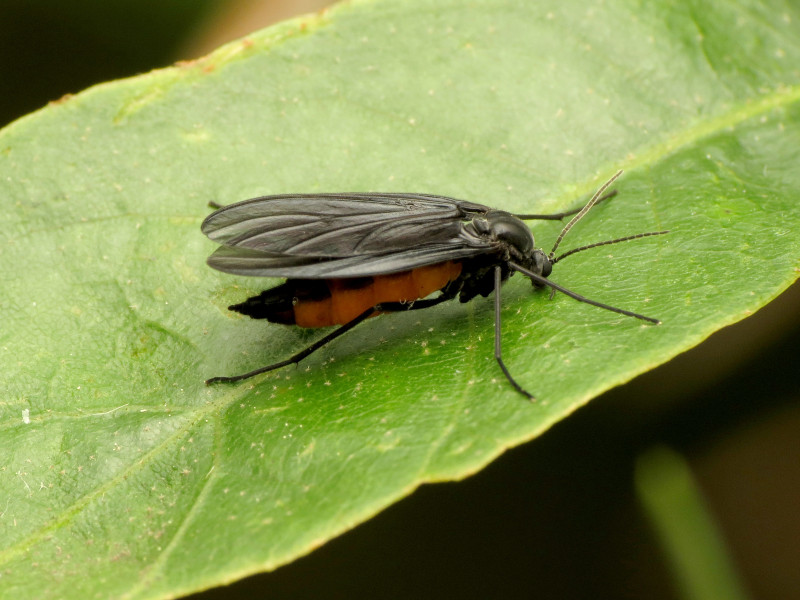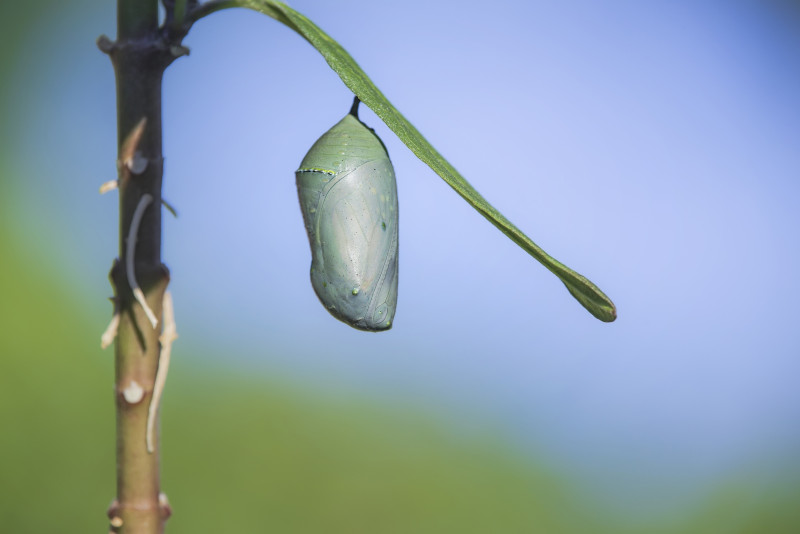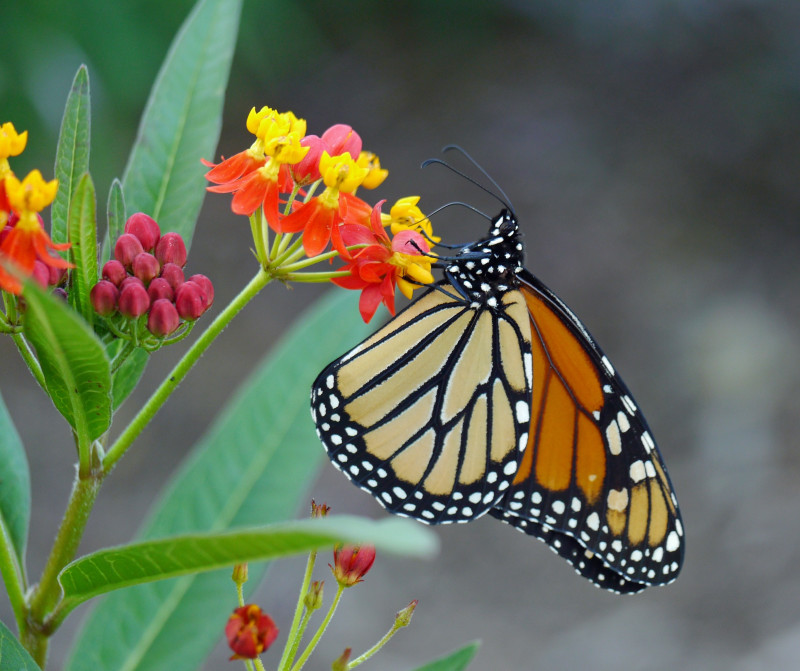Those who create a backyard wildlife habitat are usually interested in what will come to live in it. Once the plans are drawn up, beds are dug, native plants are planted, and a new bird feeder hangs from a tree limb, every day becomes a new page in their mental log of what’s happening “out there.”
Some of you surprise yourselves by becoming interested in more than birds and squirrels, but all critters—even insects and spiders. You may be one of them! If you’re observing your yard closely, you’re noticing that insects and spiders are everywhere: in the air, in shrubs, on flowers, clinging to the side of your house, hanging from the porch ceiling, floating on water, shuffling under yard debris or moving in and out of the ground.
If you’ve already tried, you’ve found that identifying all but the most well-known insects and spiders (spiders aren’t insects) can be discouraging. Considering more than 100,000 insects and 3,000 spiders inhabit North America alone, it’s no surprise that it’s a challenge. But if you’re up for it, here are some tips for identifying insects and spiders.
- Tip 1: The good news is that with only two or three hours of study, you’ll know how to narrow the field down to the various “orders” into which insects and spiders are classified and the characteristics of each order. Once you’ve done that, it’s only a matter of whether you want to try to pin down the exact name of a species. For example, if you know the insect you’re looking at meets the broad description of beetles, you won’t waste time trying to find its identity in your field guide’s “Flies” chapter. Since there are roughly 25 orders of insects, that’s a big time-saver. Familiarity is the key. The more you read and study photos, the better you’ll get at narrowing the field.
- Tip 2: There are numerous good field guides available. Your local library is an invaluable resource, too.
- Tip 3: Try to snap a digital closeup of an insect that interests you. You can refer to it again and again, as well as submit it to the most valuable resources of all: the experts at www.bugguide.net and other sites like it. Upload the image of your mystery insect, and they’ll help you identify it.1
- Tip 4: To help you get started, each of the insect groups listed on the right side of this page has a link to their order and their physical characteristics. Time spent learning about different orders is well spent. Some insects are obvious, and some just seem obvious.
What is an order?
If you’re just getting started, you may wonder where “order” fits into scientific classification (taxonomy).
Scientific classification concerns the grouping of insects (and all other living things) into batches of similar organisms. The system is complicated and seems to undergo challenges and upheavals routinely, particularly as new technological capabilities, like DNA analysis, have come along. Not only that but new insect species are being added all the time to the current catalog of over one million species. Fortunately, we laypeople can ignore the rocking and roiling and arguments between experts, except to be aware that an insect’s classification is subject to change.
How it works
Here’s an example of how scientific classification works, using a single insect species, Coccinella septempunctata, which is a lady beetle. Its classification, as with all other insects, starts in a broad category that includes all animals, based on characteristics they have in common. Then it drills down in increasingly specific terms until no other insect group on earth matches the precise physical description of Coccinella septempunctata.
Most insects are inconspicuous and go completely unnoticed by us. Of interest only to experts, they don’t have a common name. Coccinella septempunctata has been given one, however: it’s the Seven-spotted Lady Beetle shown at the top of this page. This species (despite being called a “lady” beetle, there are males, too) is widespread in N.A., and there’s a good chance it visits your own backyard wildlife habitat. The following chart illustrates its classification and where orders fall within the taxonomic hierarchy.
Scientific classification
Coccinella septempunctata and the characteristics that place it at each level:
| Classification level of Coccinella septempunctata | Name | Characteristics of this level |
| Domain | Eukaryote | Cells with membrane-bound nucleus = humans, plants, etc. |
| Kingdom | Animalia | Multi-cellular, must eat for energy |
| Phylum | Arthropoda | Hard exoskeleton, segmented body, jointed limbs |
| Subphylum | Hexapoda | Six legs |
| Class | Insecta | 3 distinct body regions, two antennae, compound eyes |
| Subclass | Pterygota | Winged insects |
| Order | Coleoptera | Beetles |
| Suborder | Polyphaga | Rove, scarab, leaf beetles, other kinds |
| Superfamily | Cucujoidea | Flower, flat bark, lady beetles |
| Family | Coccinellidae | Lady beetles |
| Genus | Coccinella | |
| Species | septempunctata | (Genus and species are always displayed in italics.) |
1 For other animals, do much the same: Study the animal’s appearance as much as possible and write down what you saw, while it’s still fresh in your mind. Try to get a photo of it. With or without one, turn to one of your field guides, go online to sites dedicated to the identification of animals, call your local City Naturalist, or contact your state’s Department of Fish and Wildlife. Email can be a helpful tool—many experts will let you email your photo to them for a quick ID.





